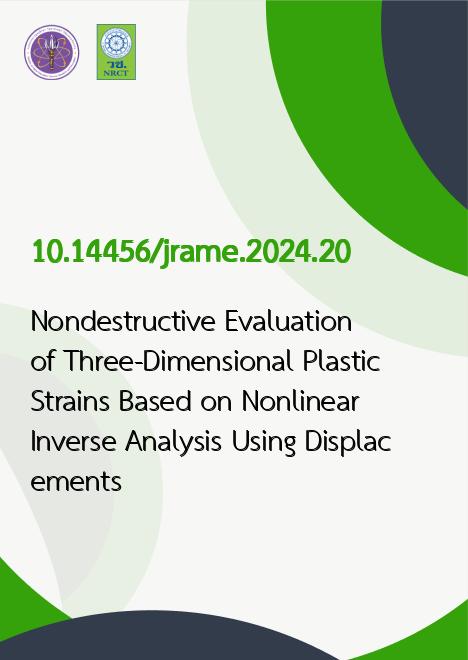
|
Nondestructive Evaluation of Three-Dimensional Plastic Strains Based on Nonlinear Inverse Analysis Using Displacements |
|---|---|
| รหัสดีโอไอ | |
| Creator | 1. S. Fujii 2. M. Ogawa |
| Title | Nondestructive Evaluation of Three-Dimensional Plastic Strains Based on Nonlinear Inverse Analysis Using Displacements |
| Publisher | Thai Society of Mechanical Engineers (TSME) |
| Publication Year | 2567 |
| Journal Title | Journal of Research and Applications in Mechanical Engineering (JRAME) |
| Journal Vol. | 12 |
| Journal No. | 2 |
| Page no. | JRAME-24-12-020 (p.1-7) |
| Keyword | Plastic strain, Non-destructive, Inverse problem, Displacement |
| URL Website | https://ph01.tci-thaijo.org/index.php/jrame/index |
| Website title | Journal of Research and Applications in Mechanical Engineering (JRAME) |
| ISSN | 2229-2152 |
| Abstract | In order to achieve a rapid supply of electricity from power plants after an earthquake, the integrity of power plants needs to be assessed more quickly and accurately. Currently, hardness tests are used as a method to evaluate the plastic strain of pipes after a relatively large earthquake, but only the outer surface of the pipes can be measured. Furthermore, it cannot be regarded as a non-destructive test, as the hardness test produces indentations. There is a method to estimate the three-dimensional plastic strain, which is the cause of the displacement, from the non-destructively measured surface displacement by inverse problem analysis. The aim of this study is to apply this method to the non-destructive estimation of plastic strains for whole structure using displacements caused by external forces, and to verify its effectiveness by numerical analysis. Here, the relationship between plastic strains and displacements becomes non-linear when relatively large plastic strain is generated. In order to solve such a non-linear problem, an inverse analysis method using iterative calculations was introduced. In order to verify the principle of the method, a simple three-point bending model is used in this numerical analysis and its plastic strains are estimated using the surface displacements. The numerical results show that the plastic strain distribution can be estimated with relatively high accuracy for large deformation where the relation between plastic strains and displacements becomes non-linear. |
